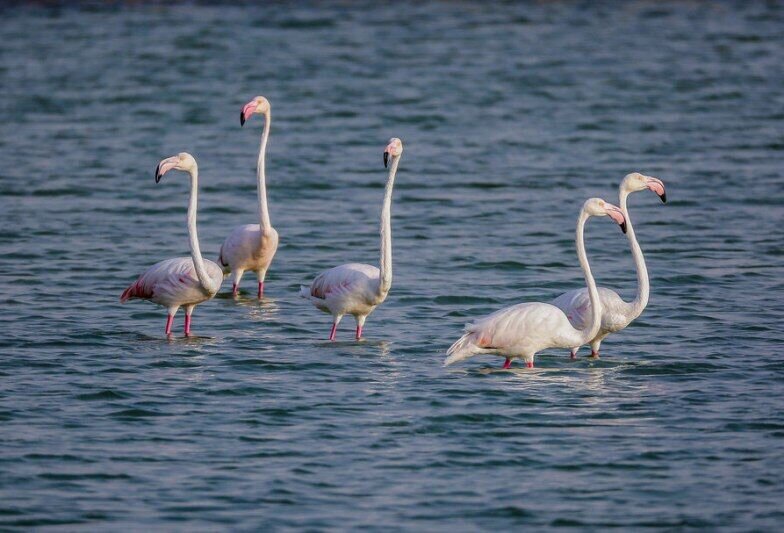Gonbad-e Kavous wetlands hosting myriads of migratory birds

TEHRAN – Flocks of migratory birds came to spend the winter in the international wetlands of Gonbad-e Kavous city of northern Golestan province.
The cold weather in Russian Siberia this year also made the migratory birds come to Iran for wintering, which are preceded by small and large groups of Eurasian teal and Coots.
Other species such as mallard, common pochard, gadwall, red-crested pochard, pintail, swallows, Tringa, pelicans, swans, greylag goose, flamingos, herons, and cormorants later enter the aquatic habitats of the city.
Golestan province has 22 important habitats for wintering migratory waterfowl and shorebirds, most important of which include three international wetlands of Almagol, Alagol, and Ajigol, head of the provincial department of environment Ahmad Ahmadi said.
Some species like herons, Eurasian teal, and Coots turned into native birds of the region due to their long-time presence and reproduction, he noted, IRNA reported on Saturday.
Noting that according to the last year's census, about 70,000 species of migratory birds entered the aquatic habitats of Gonbad-e Kavous, he added that decreased rainfall and rising temperatures this year caused the water level to drop, which will definitely have a negative impact on the inflow of migratory birds.
Alagol, Almagol, and Ajigol cover an area of 1,400 hectares. Almagol and Ajigol are seasonally-filled freshwater lakes, fed by autumn and winter rains, which become desiccated in drought periods. Alagol is slightly saline and fringed by extensive reed and grass marshes.
Almagol is sparsely vegetated. There are several human settlements. The site supports Anatidae (ducks, geese, swans, etc.), flamingos, and nesting White-tailed Plover. Placed on the Montreux Record in 1993 due to high levels of disturbance from wildfowl hunters and the extraction of water for irrigation purposes, which has lowered lake levels considerably, especially during summer.
Out of 304 bird species identified in Golestan, 107 native species of the province, 97 wintering species, 81 species for reproduction, and 19 species were seen by chance.
Iran’s bird species
Hosting over 600 species of birds, Iran is a climatically rich country, so it is said that the number of bird species in Iran is higher than in the whole of Europe. A wide range of wetlands is the reason behind migratory birds choosing Iran for an annual wintering habitat, as a large number of birds fly a thousand miles each year to benefit from this rich climate.
Every year, from early September to late February, Iran hosts rare species of migratory birds heading from north to the southern countries due to reduced seasonal temperatures and food availability.
It is estimated that there are about 50 billion birds in the world out of 9,000 species, many of which are migratory. Accordingly, about five to seven million birds migrate to Iran in different seasons. There are about 530 species of birds in Iran, 320 of which are migratory species, some of which are native species.
Among the various groups of migratory birds wintering in Iran, the largest population belongs to the group of geese, swans, and ducks amounting to 781,499 and the smallest population of seven are the long-tailed ducks or oldsquaw.
The provinces of Mazandaran and Golestan are the first provinces with the highest number of migratory birds for having sufficient resources, as the movement of migratory birds is closely linked to the seasonal availability of resources.
FB/MG

Leave a Comment